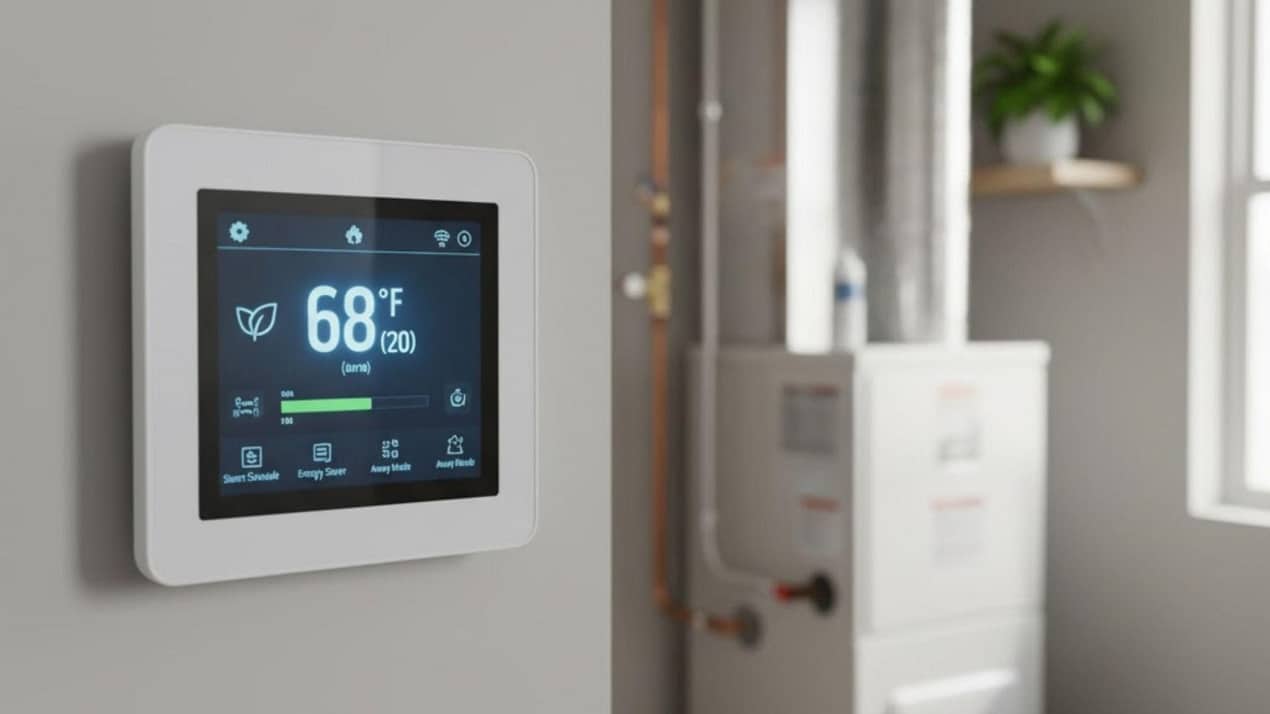The foundation of energy-efficient furnace operation lies in proper maintenance and smart usage habits. A furnace that is regularly serviced, paired with modern efficiency upgrades, can deliver consistent heating while consuming less fuel. Homeowners should focus on three key areas: system maintenance, thermostat management, and airflow optimization. Each of these plays a critical role in reducing wasted energy and ensuring the furnace operates at peak performance.
Why is Energy-efficient Furnace Operation Important?
Energy-efficient furnace operation not only lowers monthly heating bills but also reduces environmental impact. Furnaces with higher Annual Fuel Utilization Efficiency (AFUE) ratings convert more fuel into usable heat, meaning less energy is wasted. This efficiency translates into fewer greenhouse gas emissions and a smaller carbon footprint. For households in colder climates, the savings can be substantial over the course of a winter season.
What Role Does Regular Maintenance Play in Furnace Efficiency?
Routine maintenance is one of the most overlooked yet essential aspects of furnace efficiency. Dirty filters, clogged ducts, and worn-out components force the system to work harder, consuming more energy. Replacing air filters every one to three months, scheduling annual inspections, and cleaning ductwork are simple steps that can dramatically improve performance. Professional technicians offering furnace repair service in Maryland often emphasize that preventive care is far less costly than emergency breakdowns.
How Does Thermostat Management Reduce Furnace Energy Consumption?
Smart thermostat usage is another critical factor in reducing furnace energy consumption. Lowering the thermostat by just a few degrees when the home is unoccupied can lead to significant savings. Programmable thermostats allow homeowners to set schedules that align with daily routines, ensuring the furnace only runs when needed. Advanced smart thermostats even learn user behavior, adjusting temperatures automatically for maximum efficiency.
Can Airflow and Insulation Improve Furnace Efficiency?
Yes, airflow and insulation are directly tied to furnace efficiency. Poor insulation allows heat to escape, forcing the furnace to run longer cycles. Similarly, blocked vents or leaky ducts disrupt airflow, reducing the system’s ability to distribute heat evenly. Sealing ductwork, insulating attics, and ensuring vents remain unobstructed are practical furnace energy-saving tips that enhance comfort while lowering energy use. Many homeowners also consult professionals specializing in heating services in Maryland to evaluate insulation and ductwork performance.
What Upgrades Improve Furnace Efficiency the Most?
Modern furnaces are designed with advanced technologies that maximize efficiency. High-efficiency models often feature variable-speed blowers, modulating gas valves, and sealed combustion systems. These innovations allow the furnace to adjust output based on demand, preventing energy waste. Upgrading to a furnace with a higher AFUE rating can reduce heating costs by up to 30%. For older systems, retrofitting with programmable thermostats or zoning systems can also yield noticeable improvements.
How Does Proper Sizing Affect Furnace Efficiency?
A furnace that is too large or too small for a home will never operate efficiently. Oversized furnaces cycle on and off frequently, wasting energy and wearing out components prematurely. Undersized furnaces, on the other hand, struggle to maintain comfortable temperatures, running continuously and consuming excess fuel. Professional load calculations ensure the furnace is properly matched to the home’s square footage, insulation, and climate conditions.
What Are the Best Furnace Energy-saving Tips for Homeowners?
Homeowners can adopt several practical strategies to reduce furnace energy consumption:
- Schedule annual professional tune-ups.
- Replace filters regularly.
- Seal air leaks around windows and doors.
- Use ceiling fans to circulate warm air.
- Keep vents and registers clear of obstructions.
These simple steps, when combined, create a noticeable difference in both comfort and energy bills. Many of these practices are recommended by HVAC experts at First Response Heating & Cooling, who specialize in helping homeowners achieve long-term efficiency.
FAQs About Energy-Efficient Furnace Operation
1. What temperature should I set my thermostat to in winter?
Most experts recommend setting the thermostat to around 68°F during the day and lowering it by 7–10 degrees at night or when away. This balance maintains comfort while reducing energy use.
2. How often should I replace my furnace filter?
Filters should typically be replaced every one to three months, depending on usage and household conditions such as pets or allergies.
3. Does closing vents in unused rooms save energy?
Contrary to popular belief, closing vents can increase pressure in the duct system, making the furnace work harder. It’s better to keep vents open and ensure balanced airflow.
4. How long does a high-efficiency furnace last?
With proper maintenance, a high-efficiency furnace can last 15–20 years. Regular servicing extends its lifespan and ensures consistent performance.
5. Is it worth upgrading to a smart thermostat?
Yes, smart thermostats provide precise control, learning user habits and adjusting temperatures automatically. They can reduce heating costs by up to 10% annually.
Conclusion
Optimizing energy-efficient furnace operation requires a combination of maintenance, smart thermostat use, proper airflow, and system upgrades. By following furnace energy-saving tips and addressing insulation and ductwork, homeowners can significantly reduce furnace energy consumption while maintaining comfort. Whether it’s routine servicing or upgrading to a high-efficiency model, every step contributes to better furnace efficiency. For those seeking expert guidance, First Response Heating & Cooling provides trusted solutions to ensure homes stay warm and efficient all winter long.

